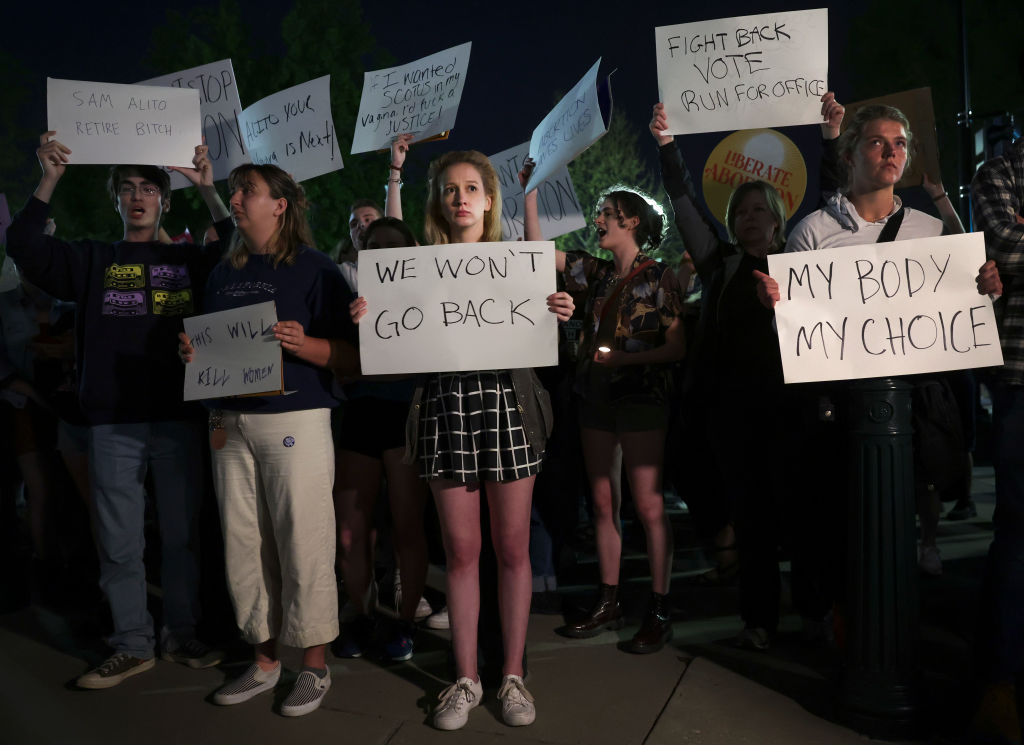Stomping on the right to privacy won’t just impact abortion rights. It could have long reaching impacts on keeping the government outside of heretofore private spheres like marriage, sex and our bodies

The U.S. Constitution is a sparse 4,400 words. This parsimonious use of language has provided full employment for generations of American lawyers who can argue what gaps in the document mean. The terse Constitution has also allowed generations of justices on the Supreme Court to act as gap-fillers through the adjudication of cases and controversies. One of the words that does not show up among the Constitution’s 4,400 words: privacy.
The Supreme Court has filled that gap by inferring that people in America (not just citizens) have a constitutional right to privacy. There are a few places in the Constitutional text that the justices have located the right to privacy.
The most satisfying is in the Ninth Amendment, part of the Bill of Rights, which says, “The enumeration in the Constitution, of certain rights, shall not be construed to deny or disparage others retained by the people.” In other words, the Ninth Amendment says just because a particular right is not mentioned in the text of the Constitution does not mean that people in America do not have it. Thus the Ninth Amendment is a catch-all protection for rights that are not specifically listed. Historically, the Supreme Court has been extremely hesitant to find new rights in the Ninth Amendment because this opens the justices to the criticism that they are just making up rights to suit their own prejudices or whims. (For a good layperson explanation of the Ninth Amendment, check out the play What the Constitution Means to Me on Amazon Prime.)
A second source of the right to privacy that justices have relied on for decades are the two due process clauses found in the Fifth Amendment and 14th Amendment. (The Fifth Amendment applies to the federal government, and the 14th applies to the 50 states.) The Supreme Court has used the due process clauses to articulate the protection of fundamental rights including the right to privacy. The 14th Amendment’s due process clause states: “nor shall any State deprive any person of life, liberty, or property, without due process of law…” This word liberty is the textual peg the Supreme Court has used to find the right to contract, the right to marry, the right to intimate relationships, the right to use contraception and the right to abortion. When the Supreme Court rules a right is fundamental using a due process clause, this is known as substantive due process—and reproductive freedoms have long been covered as substantive due process rights.
And a final source of the right to privacy is the shadow of the Bill of Rights. In a case called Griswold v. Connecticut from 1965, the Supreme Court was considering the constitutionality of a Connecticut law that made use of contraceptives by married couples a crime. Justice Douglas wrote in Griswold that privacy could be found in the emanations and penumbra of the Bill of Rights.
A penumbra is a term from astronomy that refers to the shadow cast by a planet from a light source like the sun. Here the light source was the Bill of Rights, and the shadow (or penumbra) created a zone of privacy. Using this metaphor, Douglas concluded that marital privacy included the right to use contraception. Other justices in Griswold located the right to privacy in either the Ninth Amendment or the 14th Amendment. But the upshot was clear: After Griswold, married women had the right to use the pill and other contraceptives like diaphragms. The Supreme Court would later expand access to single persons as well in Eisenstadt v. Baird.
When the Supreme Court rules a right is fundamental using a due process clause, this is known as substantive due process—and reproductive freedoms have long been covered as substantive due process rights.
The language used by the Supreme Court in Roe v. Wade in 1973 is:
“This right of privacy, whether it be founded in the Fourteenth Amendment‘s concept of personal liberty and restrictions upon state action, as we feel it is, or, as the District Court determined, in the Ninth Amendment‘s reservation of rights to the people, is broad enough to encompass a woman’s decision whether or not to terminate her pregnancy.”
Thus, in Roe v. Wade, the Supreme Court expanded on the right of privacy articulated in Griswold and said the right also included the decision of whether to have an abortion. (A good overview of how substantive due process has impacted women’s privacy rights in particular is the Netflix special, Amend: The Fight for America, episode 4.)
Substantive due process has also been used to protect the right to marriage and sexual intimacy. In Loving v. Virginia in 1967, the Supreme Court invalidated an anti-miscegenation law. The Supreme Court wrote in Loving:
“These statutes also deprive the Lovings of liberty without due process of law in violation of the Due Process Clause of the Fourteenth Amendment. The freedom to marry has long been recognized as one of the vital personal rights essential to the orderly pursuit of happiness by free men…. Under our Constitution, the freedom to marry, or not marry, a person of another race resides with the individual, and cannot be infringed by the State.”
(Vice celebrated the 50th anniversary of Loving by talking to interracial couples today.)
And in Lawrence v. Texas in 2003, the Supreme Court invalidated a state law that criminalized sodomy. In Lawrence the Court also relied on substantive due process and the right to privacy declaring, “The petitioners are entitled to respect for their private lives. The State cannot demean their existence or control their destiny by making their private sexual conduct a crime. Their right to liberty under the Due Process Clause gives them the full right to engage in their conduct without intervention of the government. ‘It is a promise of the Constitution that there is a realm of personal liberty which the government may not enter.’ Casey at 847. The Texas statute furthers no legitimate state interest which can justify its intrusion into the personal and private life of the individual.”
(For more on this case, see Lamda Legal’s “Overruled!“)
Thus, the problem with Justice Alito’s approach to privacy in his leaked opinion overruling Roe v. Wade is that stomping on the right to privacy won’t just impact abortion rights. It could have long reaching impacts on keeping the government outside of heretofore private spheres like marriage, sex and our bodies.
Sign and share Ms.’s relaunched “We Have Had Abortions” petition—whether you yourself have had an abortion, or simply stand in solidarity with those who have—to let the Supreme Court, Congress and the White House know: We will not give up the right to safe, legal, accessible abortion.
Up next:





